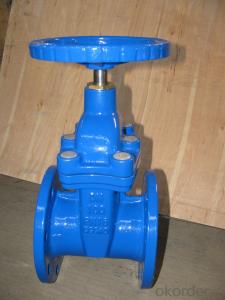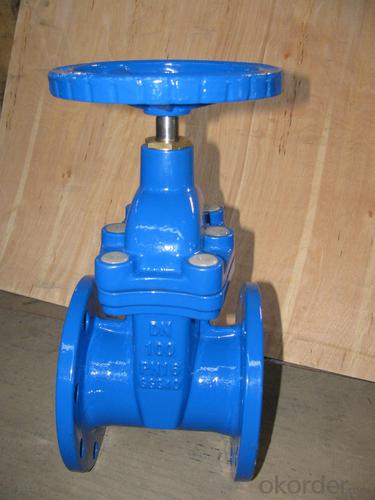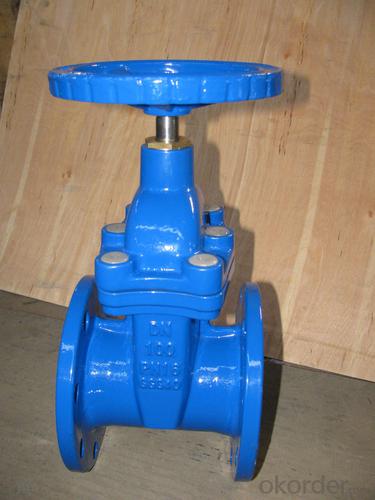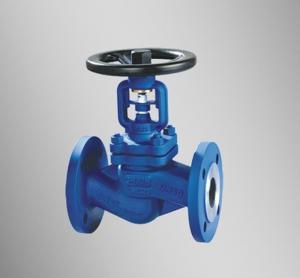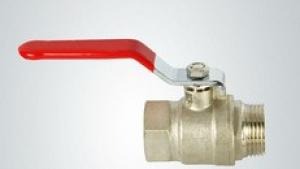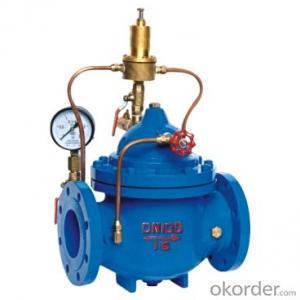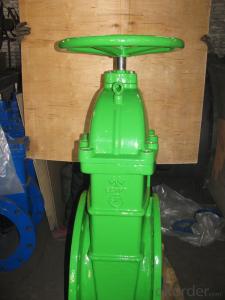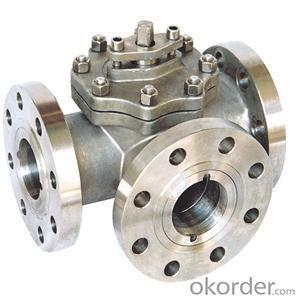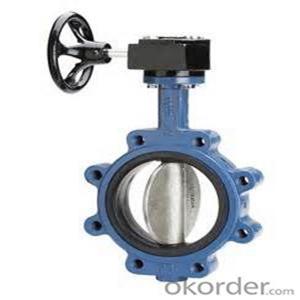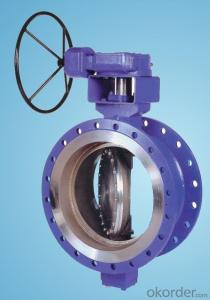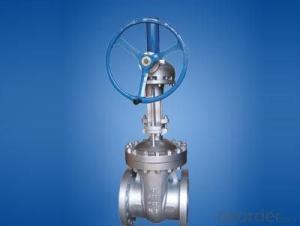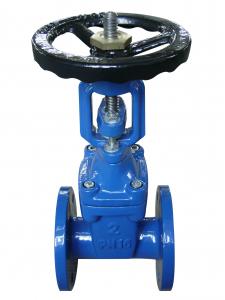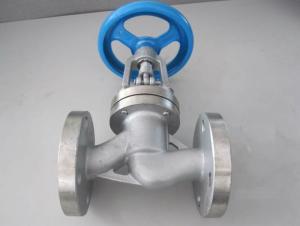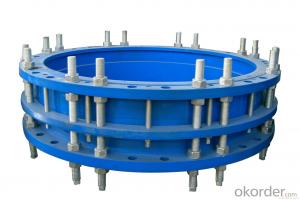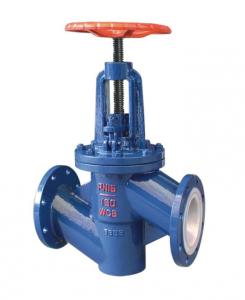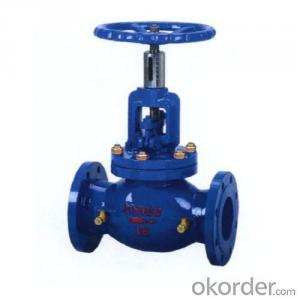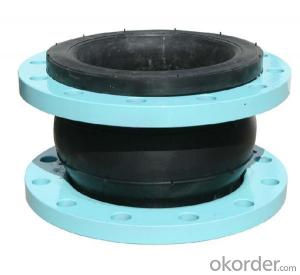Carbon steel russian standard flanged gate valve Z41H-26C
- Loading Port:
- China main port
- Payment Terms:
- TT OR LC
- Min Order Qty:
- 200 pc
- Supply Capability:
- 10000 pc/month
OKorder Service Pledge
OKorder Financial Service
You Might Also Like
1.Structure of Gate Valve Description:
A gate valve, also known as a sluice valve, is a valve that opens by lifting a round or rectangular gate/wedge out of the path of the fluid. The distinct feature of a gate valve is the sealing surfaces between the gate and seats are planar, so gate valves are often used when a straight-line flow of fluid and minimum restriction is desired. The gate faces can form a wedge shape or they can be parallel. Gate valves are primarily used to permit or prevent the flow of liquids, but typical gate valves shouldn't be used for regulating flow, unless they are specifically designed for that purpose. Because of their ability to cut through liquids, gate valves are often used in the petroleum industry. For extremely thick fluids, a specialty valve often known as a knife valve is used to cut through the liquid. On opening the gate valve, the flow path is enlarged in a highly nonlinear manner with respect to percent of opening. This means that flow rate does not change evenly with stem travel. Also, a partially open gate disk tends to vibrate from the fluid flow. Most of the flow change occurs near shutoff with a relatively high fluid velocity causing disk and seat wear and eventual leakage if used to regulate flow. Typical gate valves are designed to be fully opened or closed.When fully open, the typical gate valve has no obstruction in the flow path, resulting in very low friction loss.
2. Main Features of the Gate Valve:
• Valve body cavity using non-toxic epoxy resin,both inside and outside flashboard completely is coated with rubber
• Free of water pollution
• High manufacturing accuracy
• High strength
• Environmental protection and energy saving
• Good visual effect
3. Images

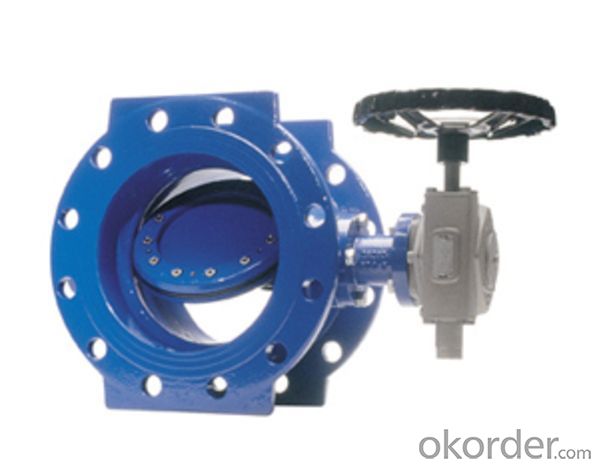
4. Gate valve Specification
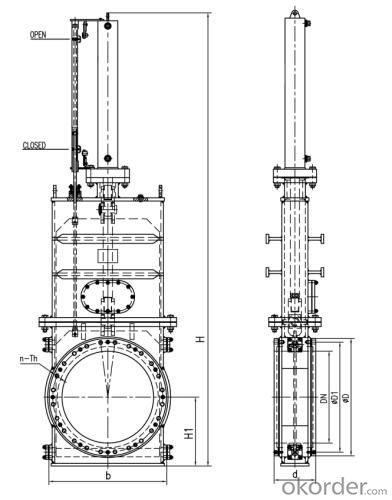
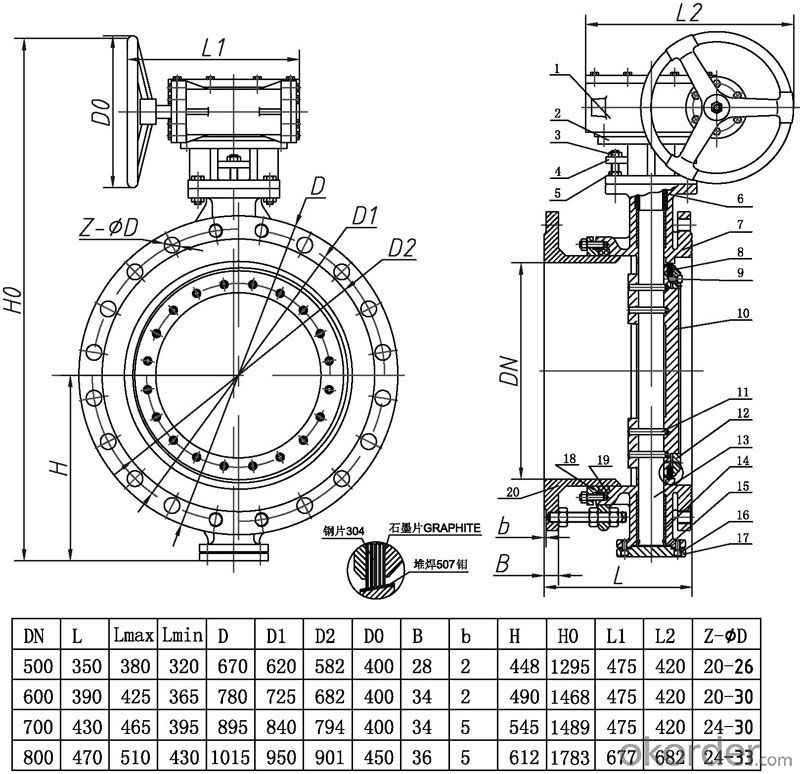
5.FAQ
1. What's are the characteristics of gate valve?
The distinct feature of a gate valve is the sealing surfaces between the gate and seats are planar, so gate valves are often used when a straight-line flow of fluid and minimum restriction is desired. The gate faces can form a wedge shape or they can be parallel.
2. What is the work principle of gate valve ?
The gate faces can form a wedge shape or they can be parallel. Gate valves are primarily used to permit or prevent the flow of liquids, but typical gate valves shouldn't be used for regulating flow, unless they are specifically designed for that purpose. Because of their ability to cut through liquids, gate valves are often used in the petroleum industry.
3. What is the structure?
Bonnets provide leakproof closure for the valve body. Gate valves may have a screw-in, union, or bolted bonnet. Screw-in bonnet is the simplest, offering a durable, pressure-tight seal. Union bonnet is suitable for applications requiring frequent inspection and cleaning. It also gives the body added strength. Bolted bonnet is used for larger valves and higher pressure applications.
- Q: What does LBC mean in a valve?
- Z: gate valve6: connection form for welding1: wedge type single gateY: the sealing surface is cemented carbide800LB: nominal pressure is 800 poundsP: the valve body is made of chrome nickel stainless steel20: nominal diameter is 20 millimetersLB refers to the nominal pressure of the valve, how many pounds, C, P refers to the body material, C refers to carbon steel, and sometimes can be omitted
- Q: For example, the knife gate valve, PZ73X-10C, DN50 torque is 5, torque is what role? What units?
- Unit: Newton M. torque is the minimum torque used to turn on the valve. It is the force that opens the valve!The valve that indicates the opening of the PZ73X-10C DN50 requires 5 meters of force.
- Q: How to find all kinds of mysterious valves of human body?
- Many cell signal channels have been found, and if you can find each signal, the channel will be almost the same. That's the mysterious valve you want, but it's hard.
- Q: What does the "PN" mark on the valve mean?
- The valve will usually be marked with "DN.PN." these two signs,DN refers to the valve path, and PN refers to the pressure levelFor example: DN25, PN16Refers to the valve diameter of 25mm valve, the pressure is 16 kg (1.6Mpa)
- Q: Can the gas valves be switched off regularly?
- No one at home, there are children, stove use time is relatively long, the gas hose has not changed for a long time, as far as possible off the stove front valve. Regular checks are necessary. For a long time, try the stove before the valve is intact, hose aging, safety first. Selection of large brands of stoves, quality guaranteed
- Q: What do you mean by "P54" in the valve z962y-p54 100V?
- Applicable temperature 540 degrees centigrade;Applicable temperature 540 degrees centigrade
- Q: 1/2, what does 1/4 valve mean? I don't understand. What does this number mean? Have a valve to introduce me, do not copy a pile of online introduction, I want to concise
- It should be said that the diameter is represented by units per inch! 15mm 6mm nominal diameter valves representing metric units!
- Q: Valve pressure grade division
- Nominal pressure PN is less than 1.6Mpa valve is low pressure valve, nominal pressure PN2.5 - 6.4MPa valve is the pressure valve, nominal pressure PN10.0 - 80.0MPa valve high pressure valve.
- Q: Which valves are installed in a directional manner?
- Very simple answer to your valve, in addition to gate valve and butterfly valve (single line up, first closed), such valves are not directional, and other have
- Q: someone else's home has valves, but also checked nothing, in addition to telephone repair, there are other ways? emergency
- That's a lie. Other people's homes do not necessarily have water.You need to keep on pressing the property.
Send your message to us
Carbon steel russian standard flanged gate valve Z41H-26C
- Loading Port:
- China main port
- Payment Terms:
- TT OR LC
- Min Order Qty:
- 200 pc
- Supply Capability:
- 10000 pc/month
OKorder Service Pledge
OKorder Financial Service
Similar products
Hot products
Hot Searches
Related keywords
